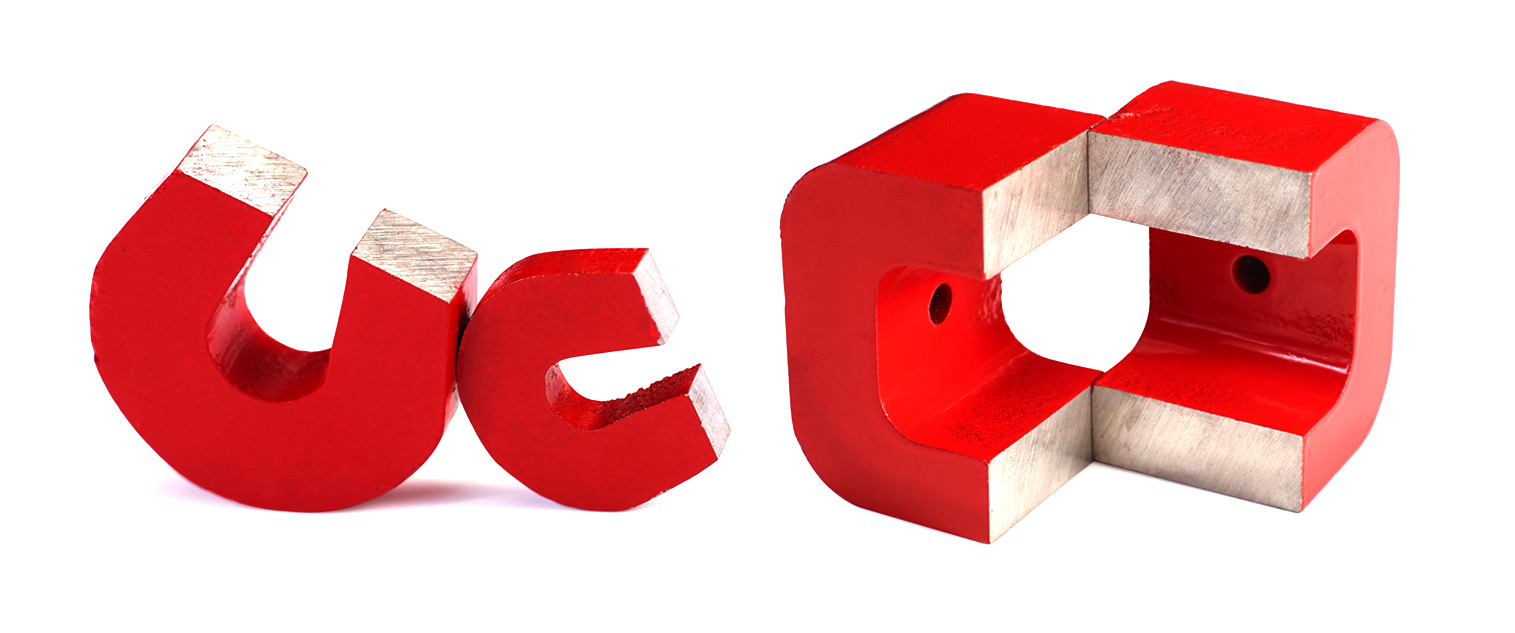Where is the north pole of a magnet?
Magnets can come in many shapes.¡ But in this case, to be able to talk about the north and south poles of a magnet, it will be interesting to think of a rectangular bar magnet. As we have seen on other occasions, magnets can be natural, as is the case of magnetite - which is nothing more than an iron oxide - or artificial magnets, which are those that we obtain by magnetizing a piece of iron that we are going to subject to a magnetic field that we have made through another magnet or through the current that we generate through electricity. All magnets, whatever type they are, are capable of showing, in a clear way, the phenomenon we call magnetism.
Magnets have poles. In a bar magnet, as we have indicated above, we can see relatively simply how iron objects are attracted strongly towards the ends. One of these ends is called the north pole and the other the south pole. The differentiation between the two poles derives from the behavior of the magnet due to the Earth's magnetic field.
In this article, we would like to tell you how to find out where the north pole of a magnet is practical. And so we would like to explain that to determine where the north pole is - when the magnet can move and is not fixed - that it points in a northerly direction. If we use a few magnets and hang them on a string - for example - we can see how they react. As we know that opposite poles attract, we will find that the north pole is a magnetic south pole. Using a compass, it is relatively easy to locate the north pole of a magnet, since the end of the compass needle, which usually points south, will be attracted by the north pole of the magnet.
It is very important, however, that we know what we are referring to when we talk about the north and south poles. Therefore, we can define the north and south poles of a magnet by indicating that the lines that make up its magnetic field run in the direction from the north pole to the south pole. If we want to be a little more specific, we can say that these lines run perpendicularly from the part that is more on the surface at the north pole of the magnet and that they begin to curve as it approaches the south pole, where they reach perpendicular to the surface of the magnetic south pole. In a closed circuit, again the magnetic material of the lines returns to its origin at the north pole.
Another of the terms we usually use when we talk about permanent magnets is the positive or negative pole of the magnet. In this environment, we usually refer to the positive pole like the one that faces north, since the field lines start from that place. However, we must warn that this is a big mistake, since, from a physics approach it is not true, because the magnetic field is a pure bipolar field, which means that there is no magnetic charge of any kind -electrons- that we should see as a single-pole since on the contrary, these magnets have two poles: north and south. This is why we can say that both poles of a magnet are equivalent, there are no single poles.







